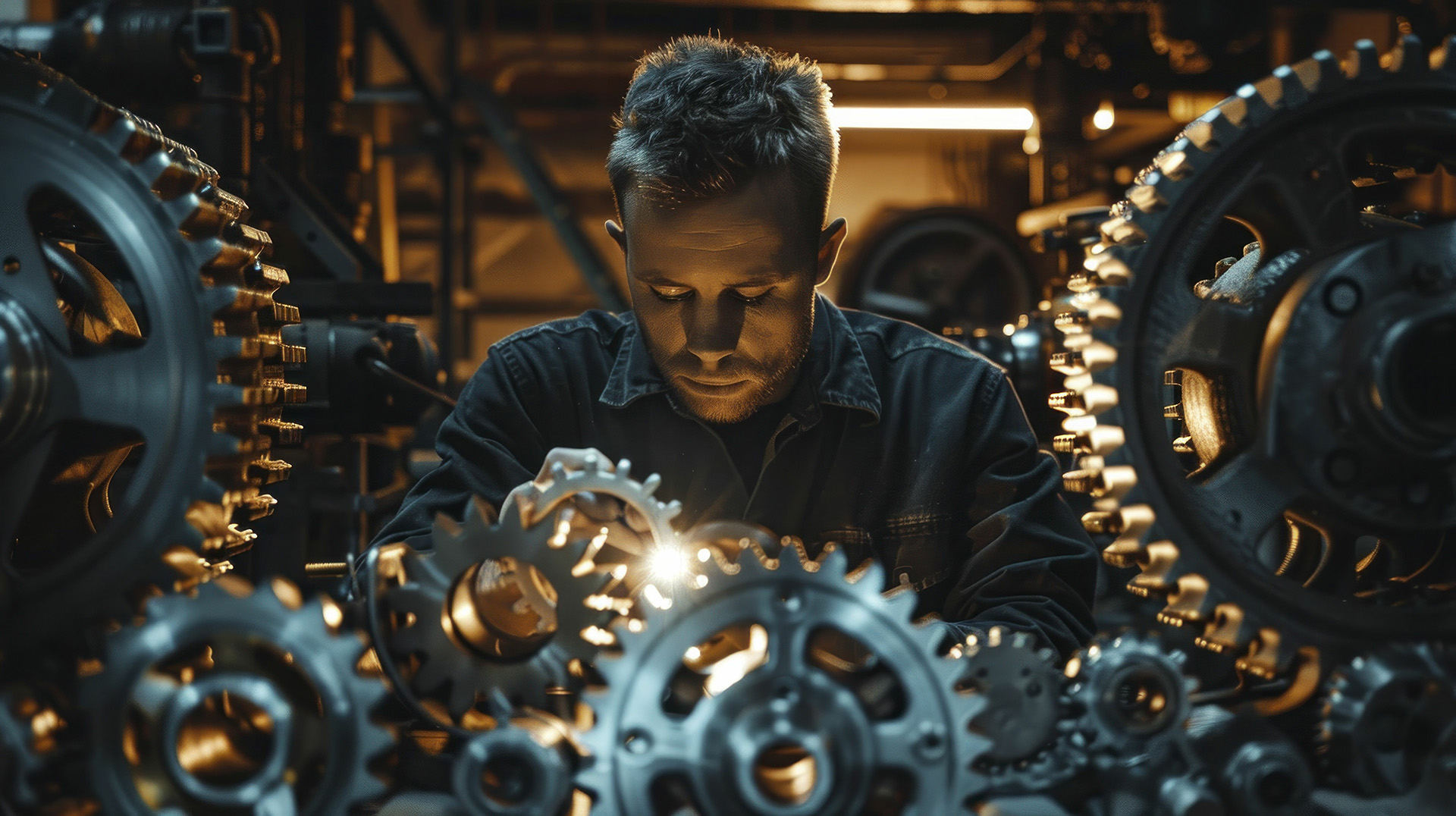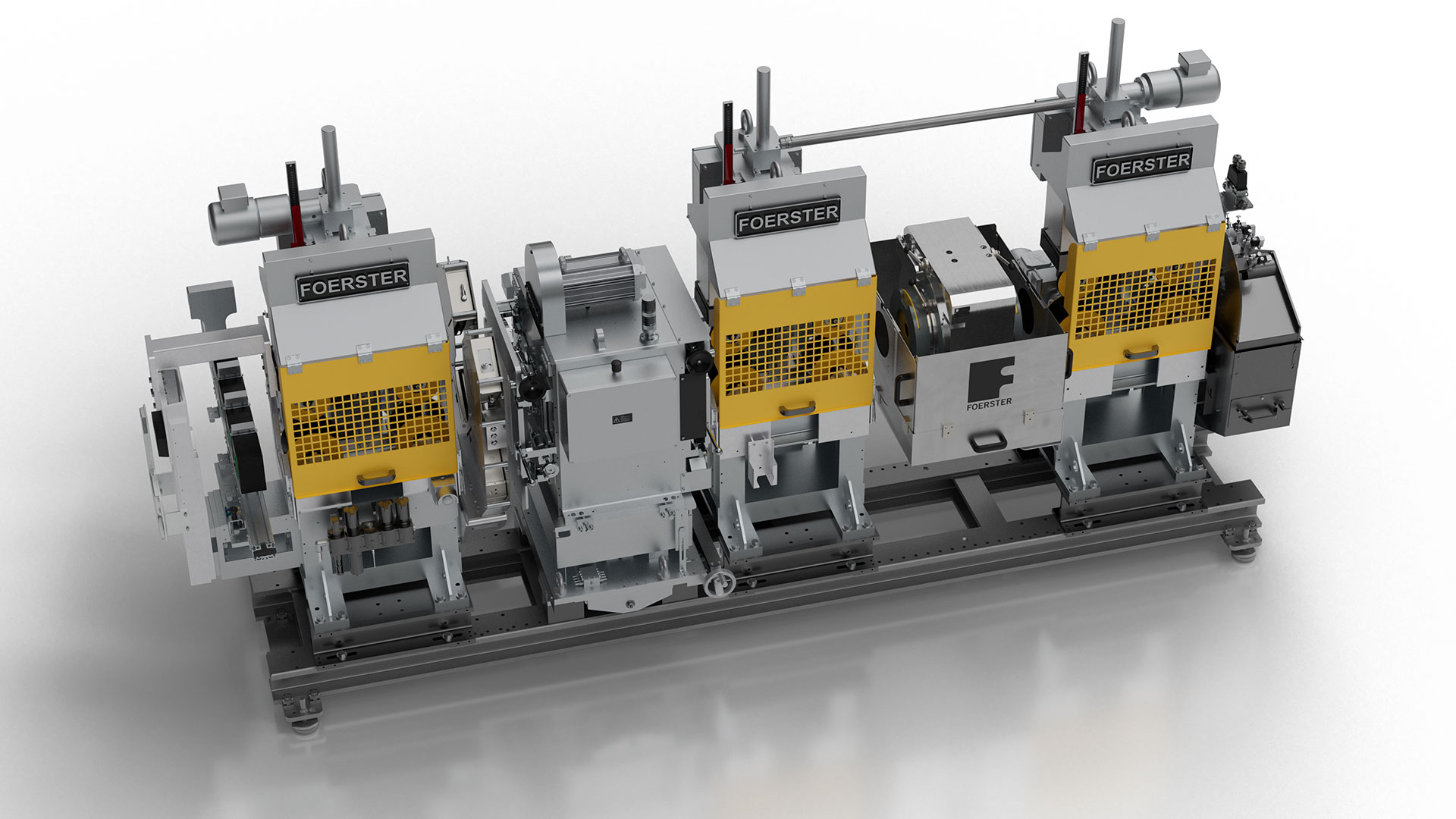Induction thermography for component testing - A new solution for the automated inspection of complex surfaces
Cracks in metal components can be detected with a variety of inspection methods, including eddy current testing, penetrant testing (PT) and magnetic particle testing (MPT). However, components with complex geometry pose a particular challenge for quality control. Scanning the surface of a part with an eddy current probe can be inefficient and PT and MPT must be applied and evaluated by trained personnel and automation is often impossible.
Physical principles and recording method
Induction thermography is a new solution to detect surface cracks on metal components. This method is contact free and non-destructive. It produces high contrast images of defects and offers a high reproducibility. Paired with short test cycles below one second per test area this is key to an automated inspection that can be integrated into a production line.
Induction thermography also complements eddy current testing. Since both methods use induced eddy currents to produce a defect signal the material properties required for one method often also match the other. Additionally, the target defects are also mostly the same.
Eddy current crack detection is simple, robust and highly efficient on linear and cylindrical surfaces where the probe can be moved along the test area in a simple motion. Any complicated movement that is required to scan the surface increases the complexity and eddy current testing loses its edge. Robot programs or manual operation are required. In such areas, induction thermography can be applied to offer a full inspection of the part.
The physical principles and recording method from inductive thermography solution
Thermography in general is the imaging of thermal radiation. In contrast to light photography, it does not require a light source illuminating a scene. Rather, thermal radiation is emitted from all objects due to the motion of atomic and subatomic particles in all matter. The intensity and spectrum hereby depend on the temperature of the matter, as described by Max Planck in his law from 1900. At high temperatures thermal radiation is visible and manifests as familiar light sources such as the glow of hot metalwork, ovens, incandescent bulbs or most notably the light of the sun. At lower temperatures, thermal radiation shifts into the infrared spectrum. It is not visible to human eyes anymore, but can be recorded with special infrared cameras.
Induction thermography is a form of active thermography where the object is deliberately heated as part of a measurement. That means an impulse is applied to a test object and the thermal response of the surface, such as heating, cooling and heat diffusion is monitored as thermal images or videos. These effects give significant insight into the material properties and constitution of the test object.
How inductive thermography works?
The induction shares a few similarities with eddy current testing but requires its own special equipment. As with eddy current testing an induction coil applies an oscillating magnetic field that induces eddy currents in the test part. But there is no pickup coil that observes secondary magnetic fields. Rather the resistivity of the material causes Joule heating which is observed with the infrared camera. Thereby defects in the surface, such as cracks, can cause a local heating effect.
A notable effect can already be visible to a camera by heating the object only by a few degrees Celsius. That means material properties of the object are usually not affected. Yet, in order to get a significant effect fast processes need to be observed. The induction system has to deliver short and intense bursts of magnetic fields and synchronize them to the infrared camera running at a high frame rate. This allows to reveal local heat sources and heat sinks which are good indicators for defects on a test part.

Figure 1 - (left) A typical induction setup with infrared camera, inductor and test part. Generators and timing equipment no depicted. (center) in Passive thermography of a steering pinion, cracks are not visible. (right) Active induction thermography reveals heat sources during the induction pulse and shows a distinct defect pattern.

Figure 2 - (left to right) Schematic crack detection: Induced currents circumvent a crack. Areas of high current density become hotspots. The hotspots are visible as patterns of heat sources in an induction thermography recording. In comparison, a light microscopy photo shows no indication of a crack.
What defects can be found with inductive thermography?
Crack detection is the main focus of induction thermography. This type of defect often produces characteristic patterns in the thermal response. When induction is applied to a material, eddy currents form close to the surface of the object and heat it up uniformly. If there is a crack in the material, the current is forced to bypass it either by passing under, to the sides or by connection through contact points on the crack walls. While the heating in the vicinity of the crack is generally reduced, these particular points receive exceptionally high densities of currents and form hotspots. On the surface of the object, they are visible to the camera. Heat generated in a shallow depth below the surface can also diffuse to the surface and manifest as blurry hotspots on a thermal image. On an induction thermography recording, a crack hence often appears as a cooler area with distinct hotspots on the ends. Sometimes even a beaded pattern of hotspots occurs along the trail of the crack.

Figure 3 - Examples of suitable parts and inspection areas for induction thermograghy (teal). Some parts with cylindrical surfaces may be suitable for hybrid inspection together with eddy current testing (orange).
Automated crack testing solutions with DEFECTOVISION CT
The advantages of induction thermography as compared to other visual indicators such as penetrant testing or magnetic particle testing are the high signal strengths and the high reproducibility of the defect patterns. This allows to train image processing algorithms to accurately detect defect patterns and distinguish them from naturally occurring patterns on good parts.
DEFECTOVISION CT is FOERSTER’s new automated induction thermography for component testing. It is the implementation of the principles of thermal image acquisition and image processing which enables a reliable sorting process.
Together with eddy current testing, DEFECTOVISION CT allows testing complicated parts in automated hybrid testing cells and to test all or most critical test areas. This without the use of expensive magnetic particle and penetrant testing.

Figure 4 - DEFECTOVISION CT
Share this
You May Also Like
These Related Stories
.png)
Why Final-Stage Component Testing is Your Best Quality Assurance Tool

Eddy Current Component Testing: A Crucial Gear Inspection Technique

